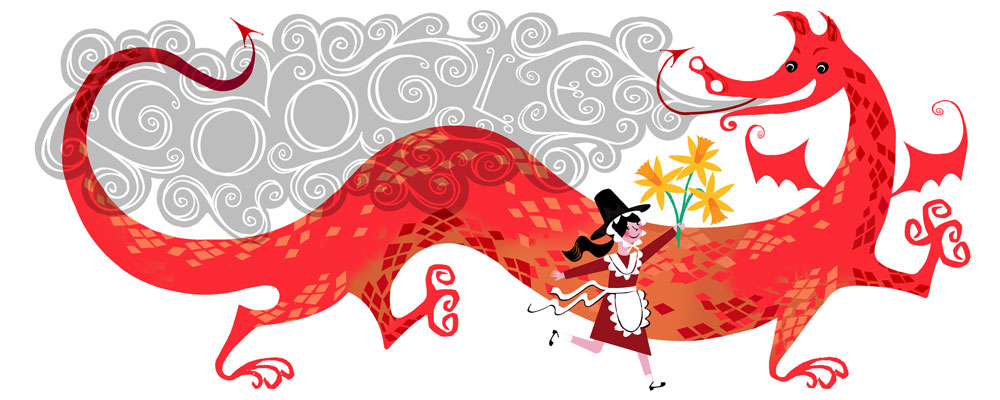
Every year, Wales unites to celebrate St David, the nation’s patron saint.
The commemorations take place on 1 March, reputedly the date of his death, which this year falls on a Tuesday.
Here’s how to brighten up the day of anyone you encounter from Wales on the date by delivering a traditional St David’s Day greeting.
How to say ‘Happy St David’s Day’ in Welsh
St David’s Day offers you a golden opportunity to greet any friends, family and colleagues from Wales in their native tongue, even if this year it will be over a Zoom call.
In the Welsh language, “Happy St David’s Day” translates as “Dydd Gŵyl Dewi Hapus”.
If Welsh pronunciation isn’t your strong point, a rough phonetic translation of the phrase would be: “deethe goil Dewi hapeece”.
How is St David’s Day celebrated?
St David’s Day has been celebrated regularly since he was canonised by Pope Callixtus II in the 12th century, with various customs developing.
These include the wearing of daffodils and leeks – two of the most recognisable symbols of Wales – and eating traditional dishes such as Welsh rarebit.
St David’s Day is not a public holiday, but in recent times towns have held parades of increasing scale, with major events in Cardiff and Swansea.
Google has made a tradition of celebrating St David’s Day, with some of the commemorative Doodles it releases on the date impressively elaborate.
Who was Saint David?
Like many early Christian saints, indisputable historical facts about David are thin on the ground, with much of his story based on the Buchedd Dewi (Life of David) written by the scholar Rhigyfarch at the end of the 11th century.
He is thought to have been born around 500 AD in Pembrokeshire on the Welsh west coast. David’s reputed mother Non was also a saint, and he was trained as a priest under the tutelage of St Paulinus.
Various miracles are attributed to him, including restoring the sight of his teacher and, most famously, creating an entirely new hill (now the village of Llanddewi Brefi) during an outdoor sermon.
Saint David became a renowned missionary in Wales and beyond, and is credited with founding monasteries in his homeland, the south-west of England (including Glastonbury) and Brittany.
He was named the Archbishop of Wales at the Synod of Brefi church council in 550, but remained in the settlement of Menevia – later named St Davids in his honour – where he had set up a large monastery which is now St David’s Cathedral.
We don’t know exactly when he died, but 1 March became the accepted date, with the year most commonly estimated at 589AD.
His body was buried at St David’s Cathedral, which became a prestigious site of pilgrimage in the middle ages, its stature enhanced by a visit from William Conqueror several years before Rhigyfarch wrote his Life.
Indeed in 1123 Pope Calixtus II decreed that two pilgrimages to St Davids was the equivalent of one to Rome, with three trips to west Wales counting as one to Jerusalem.
OVERVIEW
OnMyWay Is The #1 Distracted Driving Mobile App In The Nation!
OnMyWay, based in Charleston, SC, The Only Mobile App That Pays its Users Not to Text and Drive.
The #1 cause of death among young adults ages 16-27 is Car Accidents, with the majority related to Distracted Driving.
OnMyWay’s mission is to reverse this epidemic through positive rewards. Users get paid for every mile they do not text and drive and can refer their friends to get compensated for them as well.
The money earned can then be used for Cash Cards, Gift Cards, Travel Deals and Much, Much More….
The company also makes it a point to let users know that OnMyWay does NOT sell users data and only tracks them for purposes of providing a better experience while using the app.
The OnMyWay app is free to download and is currently available on both the App Store for iPhones and Google Play for Android @ OnMyWay; Drive Safe, Get Paid.
Download App Now – https://r.onmyway.com
Sponsors and advertisers can contact the company directly through their website @ www.onmyway.com.











